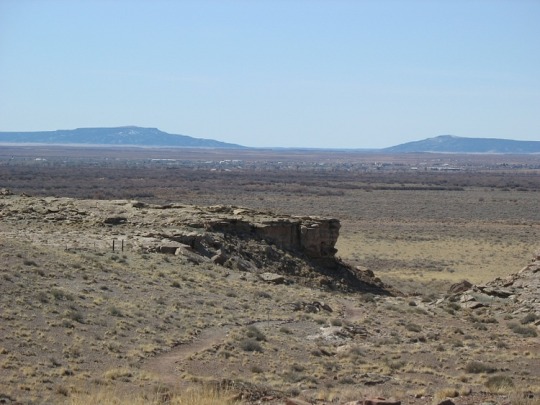#Homol'ovi State Park
Explore tagged Tumblr posts
Text




Small cemetery of Mormon pioneers that settled near the Little Colorado River in the late 1870s. The town was abandoned around 1888 due to flooding.
Homol'ovi State Park, Arizona
Oct. 2020
#dirt road#arizona#Homol'ovi State Park#cemetery#tomb#original photography#photography#taphophile#taphophilia#lensblr#photographers on tumblr#tombs#landscape#landscape photography#desert#desert photography#wanderingjana
38 notes
·
View notes
Photo

Homolovi
Homolovi or Homolovi State Park (formerly: Homolovi Ruins State Park) is a cluster of archaeological sites that contains the ruins of eight pre-Columbian Ancestral Puebloan (Anasazi) and Hopi pueblos in addition to some 300 other remains and petroglyphs. Homolovi lies within sight of the Little Colorado River in a floodplain, 2 km (4 miles) northeast of Winslow, Arizona in the United States. Archaeologists believe that Ancestral Puebloan peoples and the ancestors of the Hopi tribe once occupied these settlements, which spread out along a 32 km (19 miles) corridor on the Little Colorado River, at different intervals of time from c. 1250-1425 CE. Two pueblos - Homolovi I and Homolovi II - each contained more than 1,000 rooms in ancient times, and 40 ceremonial kivas are scattered throughout the park. The Homolovi ruins are unique in the ancient Southwest as they have helped archaeologists better understand the cultural transitions and social changes that occurred in the region during the 13th through 14th centuries CE. Four of the sites at Homolovi are listed on the U.S. National Register of Historic Places, and the park is currently managed by the Arizona State Park system.
Geography & Prehistory
Homolovi or Homol'ovi is Hopi for “place of the little hills,” and Arizona's Hopi Reservation and Hopi Mesas are located only 84 km (52 miles) north of Homolovi. Lying in extreme close proximity to the Little Colorado River (Hopi: Paayu), Homolovi is situated in the Great Basin Area Desert Grasslands and is 130 km (80 miles) southeast of Flagstaff, Arizona, 117 km (73 miles) from Wupatki Pueblo, and 217 km (135 miles) west of Gallup, New Mexico. Homolovi covers a total area of 1,800 ha (4,500 acres) and sits at a high desert altitude of 1494 m (4,900 ft). Homolovi only receives about 178 mm (7 in) of precipitation annually.
Scientific and archaeological research has shown that nomadic, prehistoric peoples occupied the area that now comprises Homolovi intermittently from c. 4000 BCE- 400 CE. The Little Colorado River made the area somewhat attractive to an array of fauna: cottontail rabbits, jackrabbits, beavers, prairie dogs, porcupines, waterfowl, fish, elk, deer, and antelope come to the river seasonally. Ancient prehistoric peoples and tribes came occasionally to the region while hunting and migrating seasonally, but they did not construct settlements within the region until c. 500-600 CE. The reasons for this are likely due to the area's very dry climate and lack of wood and storable food resources. When possible and climatic conditions were favorable, early sedentary people hunted and gathered like their prehistoric forebears, but they also began farming, growing corn, beans, squash, and other small crops. It is also known that they grew cotton for textile production. Yucca and rice grass have grown in the area for several millennia, and indigenous people utilized rice grass as a staple food when the maize crop failed.
There were two periods of inhabitation of Homolovi prior to the construction of the pueblos at Homolovi in the 13th and 14th centuries CE: an Early Period from c. 600-900 CE and Middle Period from 1000-1225 CE. When favorable climatic conditions existed in the 11th and 12th centuries CE, indigenous peoples built small pit houses as opposed to large-scale constructions made of adobe. These earlier occupations of the area around Homolovi appear short-lived and sporadic, lasting around a decade or two. This pattern of periodic settlement and abandonment is likely due to changing local environmental conditions and the Little Colorado River. Depending on the year, the river could be bone-dry due to lack of rain or prone to flooding due to heavy snowfalls near the river's headwaters. It is known that the Little Colorado River was flooded regularly in the early 1200s CE and that the decades leading up to the 13th century CE were wet.
Continue reading...
21 notes
·
View notes